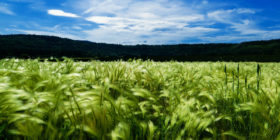Researchers at York University have discovered that moose saliva may help the animals control a potential dangerous toxin found in the grass they frequently eat.
A professor of biology at York University said biologists at the university enlisted the help of the Toronto Zoo in collecting spit samples from the captive animals.
Dawn Bazely said the saliva was then applied to a grass which hosts the toxic fungus.
The fungus in the grass that was coated with moose drool grew more slowly and produced less toxins than the control grass.
“If you think about moose they have home ranges. So they may actually be re-encountering the same plants [and] they may get a benefit,” Bazely said.
“We certainly know the animals remember plants they encounter and they eat a small amount of the plant, and if it makes them feel ill they might avoid it in the future.”
She said the experiment grew from research looking at how grazing by moose affects plants. Over thousands of year,s plants have developed anti-herbivore defences like spines, thorns and bitter berries.
Plants also reach out to a third party for assistance in deterring animals from eating them.
“They can phone a friend to help them with defences,” Bazely said.
“And one of the friends they can phone is a fungus. Many plants have hidden inside them a fungus that is living entirely within the plant.”
Bazely said the next phase of research is to determine the benefit of the fungus-inhibiting drool.
She said the spit acts quite quickly on the fungus, with noticeable results appearing in 12 to 36 hours.





Leave a reply